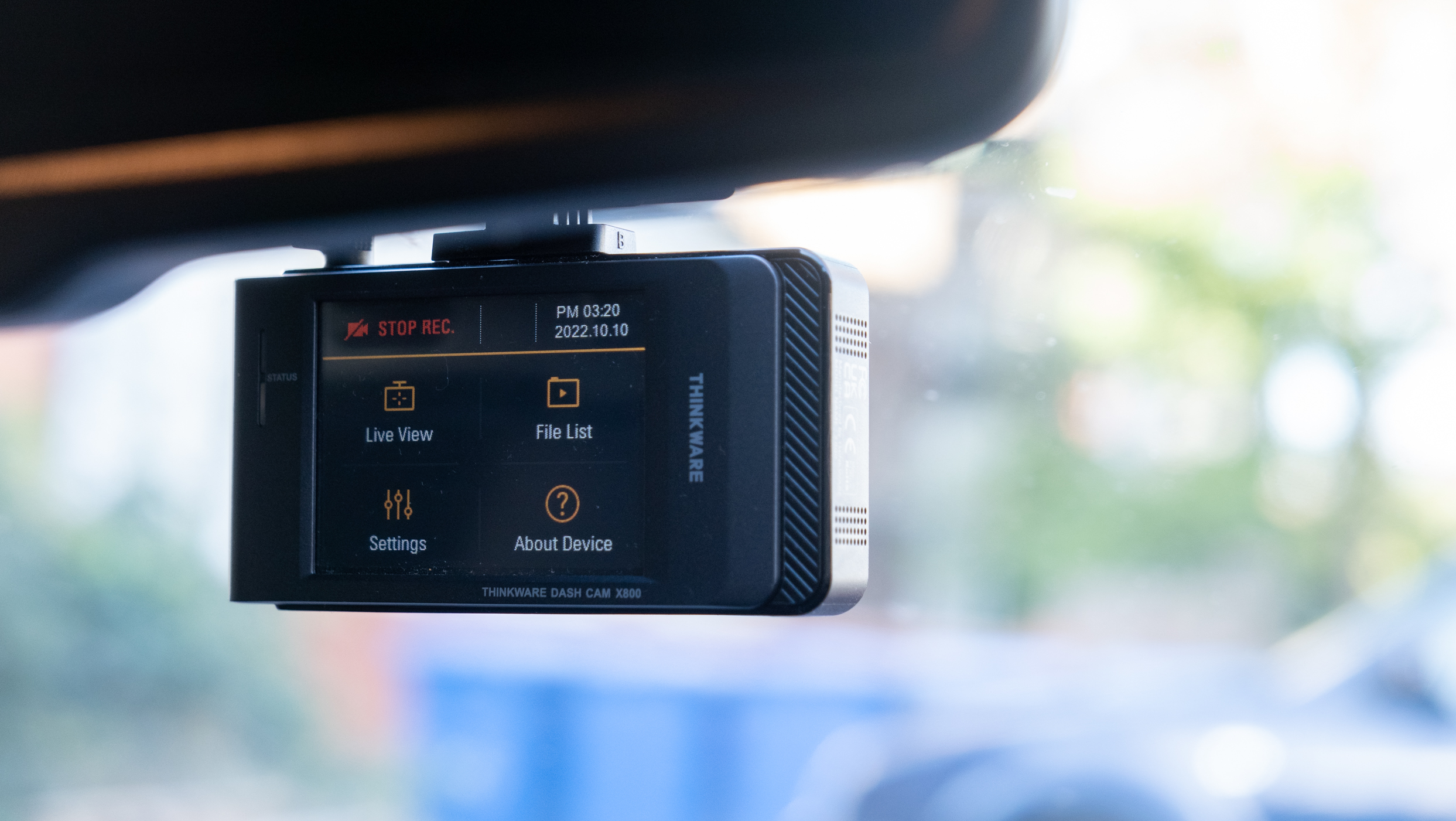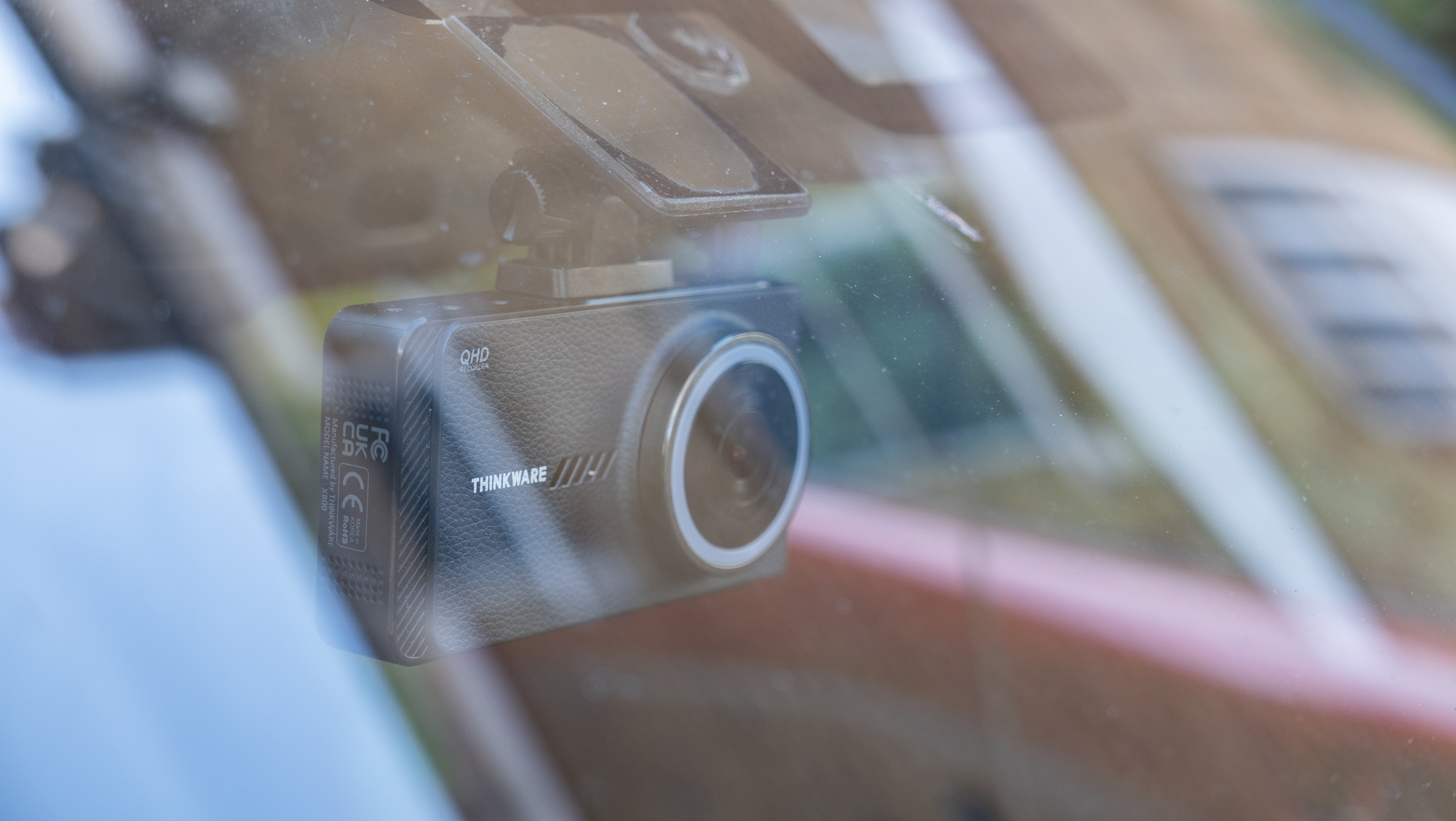Two-minute review
It’s rare to heap much praise on the way a dash cam looks, given they spend most of their time hidden behind the rearview mirror, quietly getting on with their job. Not so with the Thinkware X800, which we think looks pretty great thanks to its faux leather grain effect, pronounced camera bump, and soft-touch plastic housing.
It doesn’t have the jewel-like quality of an iPhone 14 Pro, of course, but it’s a much nicer thing to hold and look at than most of its rivals. Speaking of which, the X800 is priced only slightly higher than the excellent Garmin Dash Cam 57 and costs about the same as the Garmin Dash Cam 67W, which we rate as one of the best dash cams you can buy. Both the X800 and Dash Cam 57 have pleasing aesthetics and record footage at 2K resolution, also known as 1440p, or 2560x1440.

More important than looks, of course, is the X800’s specification and performance. Thinkware has fitted the X800 with a Sony Starvis IMX335 imaging sensor for improved low-light capabilities, and while this certainly produces good nighttime footage, details like vehicle registration plates are lost, and their characters are blown out by headlight reflections.
This is something all dash cams struggle with, but it’s important to note that nighttime footage recorded by the X800 is otherwise pretty good. So long as you have noted the registration plate of, say, a vehicle that crashed into you, the footage should clearly still show who was at fault.
Sensor: 5.14MP CMOS
Video: 2k/30p
Field of view: 150°
Memory cards: 1x microSD/SDHC/SDXCUHS-1 up to 128GB
LCD: 2.7-inch (320 x 240)
Connectivity: 1x DC Barrel, 1x V-IN, 1x GPS
Size: 100.3 x 55.5 x 30.0mm
Weight:107g
The X800's daytime footage is perfectly acceptable, with details sharp and legible, and exposure is handled well as ambient lighting conditions change. The camera records at 1440p, so the footage produced is of slightly higher resolution than Full HD.
The 30fps frame rate is mostly fine, although the smoother footage produced by 60fps would have been a welcome bonus – and it’s something the Garmin Dash Cam 57 offers at a slightly lower price. Where the Thinkware beats the Garmin is with its viewing angle, which at 150 degrees is ten degrees wider than its rival.
Turn the Thinkware X800 around and you’ll find it has a fairly large display, measuring 2.7 inches, which makes it easy to get the angle and position of the camera just right. The big screen also makes it easy to navigate through the X800’s simple menu system, and the whole thing is set up and used without the faff of a companion smartphone app. That’s because there’s actually no Bluetooth or Wi-Fi to connect to one in the first place.
Thinkware is going against the grain a bit here, but we actually quite like the self-contained, unconnected approach of the X800. Smartphone apps are often the achilles heel of any dash cam, with their clunky interfaces and patchy connectivity, so going back to basics with a touchscreen and nothing more is something we applaud here.
Want to view recorded footage? Eject the microSD card (32GB, included in the box) and pop it into your computer using the included USB card reader.

Like many other dash cams, a hardwiring kit or OBD2 connector can be bought separately. This provides the camera with a constant power supply from your vehicle’s fuse box (instead of plugging into a 12V or USB socket, which goes off with the ignition) and enables parking mode. In the X800’s case, this records timelapse video at two frames per second, then if an impact is detected it’ll create a recording that includes 10 seconds before and after the collision.
If parked for extended periods – a couple of days at the airport, for example – there’s an energy-saving mode which starts recording footage when an impact is detected, then records for 20 seconds after. This means you miss the impact itself, but have footage from one second after, which will likely include a shot of the guilty party. This mode runs for 72 hours before powering down, so you can leave your car for three days before the dash cam fully shuts down.

Like many other dash cams at this price, the X800 misses out on GPS, at least out of the box. Thinkware sells an optional GPS receiver, which plugs into the dash cam and sticks to the windscreen nearby. With that attached, the X800 adds precise location and speed data to recordings, and driver assistance systems like forward collision and lane departure warnings can be enabled.
Lastly, the X800 does not have a battery – very few dash cams do – but instead uses a super capacitor, which stores enough energy to power the camera for a few seconds after the car is switched off, giving it time to save the current recording and power down correctly.
Should I buy the Thinkware X800?

Buy it if...
Don't buy if...
via Tech Trade
Comments
Post a Comment